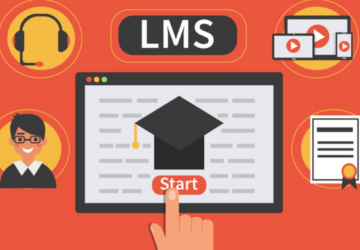ERP aka Enterprise Resource Planning has expanded and matured there to support the majority of business functions from front-end office tasks like SFA sales force automation to back-end processes like HR, accounting, & manufacturing.
Businesses rely on ERPs to not only reduce the cost of the business processes but also provide access to important information to the employees so they can make decisions faster.
As companies are increasingly relying on a trustworthy ERP for running their business, these systems continue to incorporate and evolve new techniques and provide support to a huge range of functions.
In this article, we will understand the 10 best ERP trends to implement in 2023.
Top 10 ERP Trends for 2023
Here we have made a list of the most popular ERP trends that will help businesses in the current year as well as in the future. So, let’s begin with understanding each trend separately.
1) AI Integration and Various Intelligent Technology
There are at least 15% of executives who believe that AI cloud changes the perspective of companies’ loss and win. Artificial Intelligence is naturally made to penetrate the ERP industry.
When users have to install different add-ons in their systems to enjoy the advantages of automation & intelligence. However, it’s becoming common for ERP solutions to have these functionalities in-built.
ERP having intelligent tech integration is known as iERP. With iERP companies get an essential edge with more intelligent data processing.
When you transfer business information into an actionable insight is the beginning. Still, there is a huge amount of data that companies have to collect. There’s so much unstructured data that companies need to get on. Hence, companies have to search for new ways of examining the data to make its complete use. When this matter arises, an AI-driven ERP solution makes a way.
With the use of intelligent ERP solutions, you can make workflows, minimise errors, reduce the time of information loading, and much more. It can automate routing processes that take much time to complete. Hence, it helps to free some time of the employees and assist them to focus on other valuable tasks.
Intelligent ERP also helps analyse the traditional data and add it with data from different departments. The system can also suggest some effective ways for executing the internal processes.
So, comprehensively, when ERP is combined with AI and different intelligent and modern techs, they can enhance your business productivity and efficiency.
2) Cloud solution for easy ERP solution for your growing business
Traditionally, multiple companies used to have on-premises ERP apps and they are unwilling to trust the core business apps to the cloud, but this is changing quickly.
Companies are accepting the idea of cloud ERP apps and taking advantage of simple deployment, elasticity, lower costs, modern functions, minimum requirements of internal IT resources, & its ability to quickly add functions and users to store growth for businesses.
The COVID-19 pandemic has illuminated the advantages of using cloud ERP & increased the range of people shifting from on-premises ERP systems to cloud-based ERP apps. It is because cloud ERP helps your employees to work from anywhere with a stable internet connection. So, they don’t have to be present in the office every time.
So, this ERP trend is beneficial for both companies, as well as employees. For a company, if the CFO is thinking of cost-cutting, they can provide remote work to certain employees and save office resources. Employees can save their time and expenses by travelling to the office, and work comfortably from their homes.
3) Development of Mobile Apps
The time is gone when any technical solution such as ERP was tied to one machine; now cloud is its solution. However, in modern ERP solutions, along with the cloud, people expect complete mobile support.
Other than on-the-go access to data, the mobile app architecture in ERP will bring a lot of benefits. One of the best advantages of mobile apps is that you can perform business tasks from anywhere at any time. It means that both front-end and back-end functions are made available on mobile devices like smartphones and tablets.
It makes notable impressions on the overall productivity. For example, employees who are working remotely or after office hours can easily close deals from home. That is why they get easy access to all the tools and data they need by using their mobile phones.
Mobility means having an accurate and suitable information capture procedure. Staff can collect and key in information directly from the field. It also removes the requirement to wait for them to get back to the office and insert the information.
Mobile ERP can also decrease the chances of production delays. Companies also get advantages of different features of mobile ERP such as better decision-making, accurate workflow, and improved efficiency. Moreover, as many companies have adopted work from home till now, their staff can get easy access to their ERP platform using their mobile devices.
Here’s a complete guide on Mobile App development that helps with developing Mobile ERP solutions.
4) Supporting Real-time data
Companies get advantages and get easy access to their real-time information. Executives and professionals depend on real-time tools to improve their company’s asset usage and enhance the agility and reliability of their operations.
Such analytics can be a key point to get insights into real-time performance, analysis of operation quality, and logistics management. Hence, it isn’t surprising that ERP systems are supporting and making the feature of accessing real-time data easily one of their core functionalities.
Smart business decisions rely on accurate and timely data. Hence, ERP systems are throwing more attention to providing reliable data in real-time for the benefit of business owners.
With this feature, management gets better visibility of the data coming from different departments and sources. It usually shows the difference between failure and success while making any decision.
Another important advantage of real-time information in ERP is its chances to improve the user experience. ERP systems when integrated with CRM software give you easy access to a whole series of useful customer-related data.
Your customer service professional will get armed with habits, purchase histories, and different important data. This yields a quicker chance of enhancing sales, retention rates, engagement levels, etc.
5) Personalization
ERPs are getting more and more specialised and personalised. Not creating confusion between configurations, where primary things like currency, language, and time zones are maintained.
With easy ERP personalization, the system is increasingly adaptable to a particular way of finishing different tasks. It can easily learn preferences, patterns, and working styles, and even help users to make them understand shortcuts that help them to work efficiently and effectively. No-code or low-code personalization assists the users to get the software themselves, no developer or no programmer’s assistance is required.
6) Two-tier ERP
The functioning of two-tier ERP has been present for more than 40 years, but it is getting more popular in the upcoming years.
With two-tier ERPs, organisations use 2 different ERPs to address their requirements. The 1st Tier ERP will have the functionality needed to run a huge global business that is used at a corporate level.
On the other hand, divisions and subsidiaries run flexibly on the 2nd tier that will support their specialised requirements- usually present in the cloud.
This feature is less expensive than using a backfit corporate ERP to work for the whole business. It provides subsidiaries with the capacity to work nimbly and responds to updating business situations on the fly. While providing the parent organisation with important insight into the financials and other important aspects of their 2nd Tier company.
The main reason for this approach is easy data exchange between these 2 tiers. In this way, the subsidiaries continue to work efficiently, and the whole company maintains compliance and oversight. Because of this reason, different companies get to choose a similar vendor for both tier 1 & tier 2.
7) Predictive Analysis
The desire to have an AI-infused ERP in an organisation is increasing every day. This solution helps with customer data and operational data mining for the latest and most accurate insights that increase the top & bottom lines.
While it is becoming possible to examine the ERP information to show what took place in the past in the business, now, with the use of prediction analysis, businesses can uncover & address the things that are most likely to happen shortly.
For instance, software with ML capabilities can analyse a maintenance company’s data that helps with machine repairs to predict when a severe or small breakdown can occur. So, the business can optimise its maintenance schedules and avoid the problems that are most likely to happen due to poor maintenance.
8) Collaborative ERP
Many organisations collaborate with ERP service providers. For instance, if one person is working on a purchase, and needs input from another person, he has to switch from ERP to MS Teams, Zoom, or Slack, and then get back after receiving the input.
A similar situation occurs when one employee is required to liaise with suppliers, customers, and partners, they HAVE TO toggle between various apps. Now, many ERP systems are beginning to give robust collaboration. Microsoft and SAP, for example, have partnered and it makes it possible for different users to share live lines of ERP data directly in MS Teams.
9) Using composable ERP
With the help of composable ERPs, different parts of the software are assembled when needed to provide the latest opportunities, threats, and challenges. A simple term for this can be said- re-composable business for the time to re-compose an organisation as conditions upgrade.
For instance, if requirements are rising in a particular country, and users need more product A than B, a composable ERP makes it possible to rapidly buy and source more necessary materials, distribute workloads, build more in-demand products, move workforces, and finally ship the products where it has to be sent. This feature helps organisations another level of agility that they need to thrive in changing conditions.
10) Provide more attention to Digital Marketing
The marketing factor is the one that comes to everyone’s mind when talking about upgrading their sales, but when talking about ERP, marketing is generally ignored.
If the business wants to get a highly competitive edge in this modern world, then they should use this module.
In the beginning, let us discuss how an ERP is related to the company’s marketing strategy. Marketing is not just about building attractive and engaging campaigns, these are just parts of the marketing tactics.
A tool is required to measure marketing success. Analytics helps to search for what is lacking in the marketing strategy and also helps in determining the target audience. That is where the ERP enters.
A digital marketing technique that can not get the information from the ERP system can lack relevant metrics. It is also a robust help to marketers if they use CRM and different resources for executing their marketing strategy. Due to this reason, businesses are connecting ERP to the marketing process.
Another trend of digital marketing techniques of ERP is using social media platforms. There’s a huge pool of social media users, and the number is increasing with time. Because of this, organisations are now recognizing digital marketing as a professional market for their products and services advertisement.
Additionally, companies might also need social media marketing skill experts to bring a hike in their sales and profit. These professionals will help your business with strong digital marketing skills and ultimately help your organisation develop a strong digital presence globally or in a particular decided location.
Other than that, we have a list of Web Development Trends you should know to make your software/websites a better place for your users. Check them out right away!
Final Verdict
In the end, we hope that the top 10 ERP trends that we discussed here will help you gain knowledge about what else you can add to your ERP to make it competitive. To leverage these trends, you can also set up a dedicated development team who are skilled enough to help you with ERP solutions.
Besides these ten factors, there are more modern ERP trends, but discussing all of them will make this article boring. So, we have gathered the top ten of them and presented them in front of you. For more details, you can visit us regularly. Till then, happy reading!








